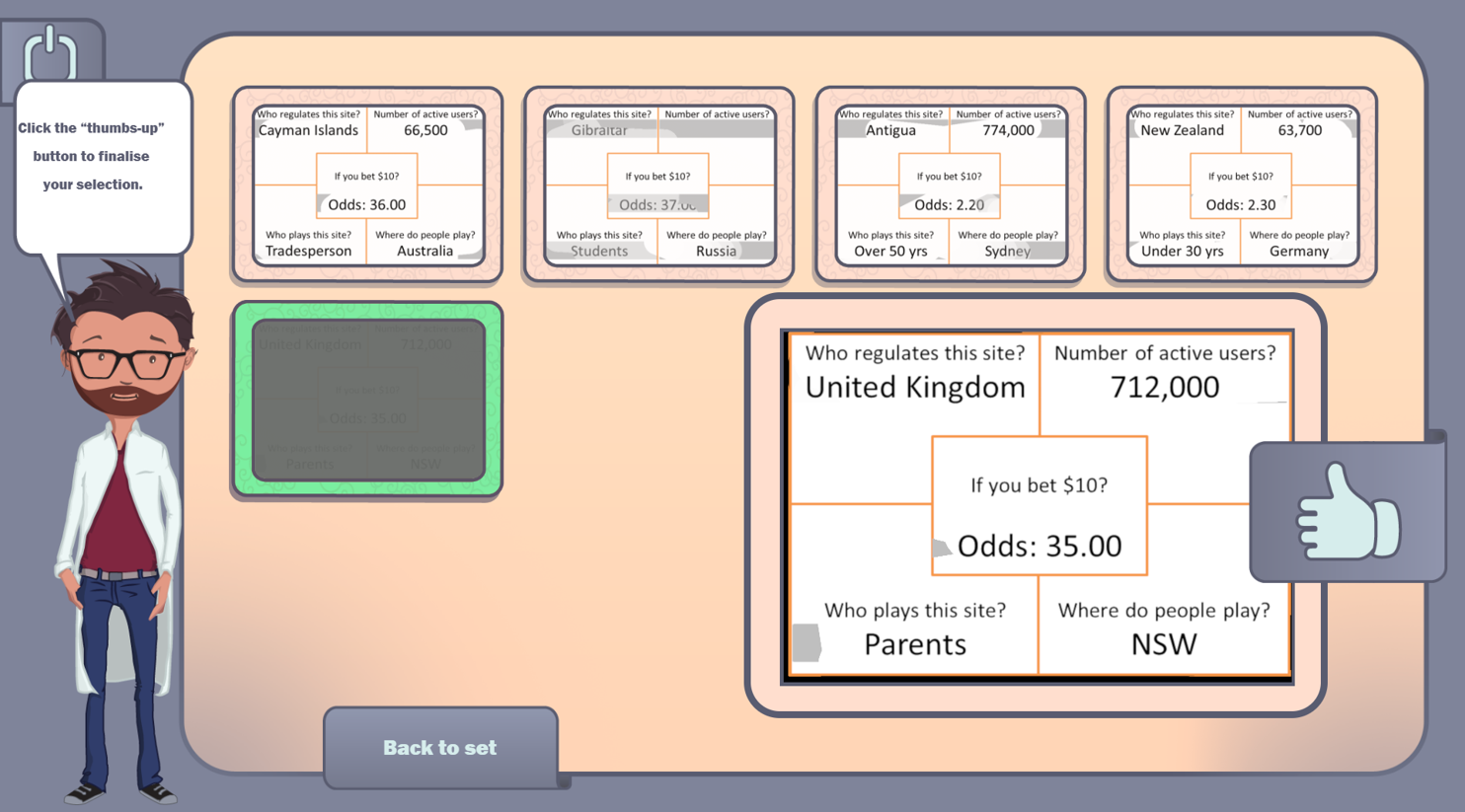Discrete Choice Experiment (DCE)
Basic principles of consumer decision making, e.g. attribute-based vs alternative-based (Payne et al., 1993, Bettman et al., 1998). Traditional Information Display Matrix (Jacoby et al., 1976) served as tool to uncover those processes. Eye tracking was used to investigate decision making processes (see e.g. Reutskaja et al., 2011, Shi et al., 2013 and Orquin & Loose, 2013 for a review). Research on decision-making indicates that people often do not integrate all information provided into the decision, but often make choices based on a few attributes. Heuristics can lead to biased decisions (Waechter et al., 2017) .
How to capture process data in discrete choice experiments? Implementation in AYB Software is depicted in Fig 1 and 2.

Fig.1 Implementation in AYB Software
AYB "scratching“ experiment functionality
- Traditional Information Display Matrix (Jacoby et al., 1976) is adapted to an online environment.
- The method can be compared to MouselabWEB (Willemsen & Johnson, 2010) and can be performed on mobile phones and PCs.
- Choice options with disguised features are presented to the participants.
- Subjects decide which information they want to reveal and choose the prefered alternative.
- Instead of overriding the information with the mouse, subjects need to scratch the areas of interest in order to reveal information.

Fig.2 Implementation in AYB Software
This webpage is currently under construction!!!
